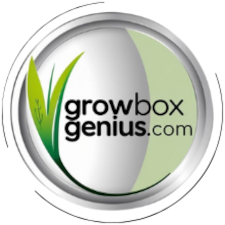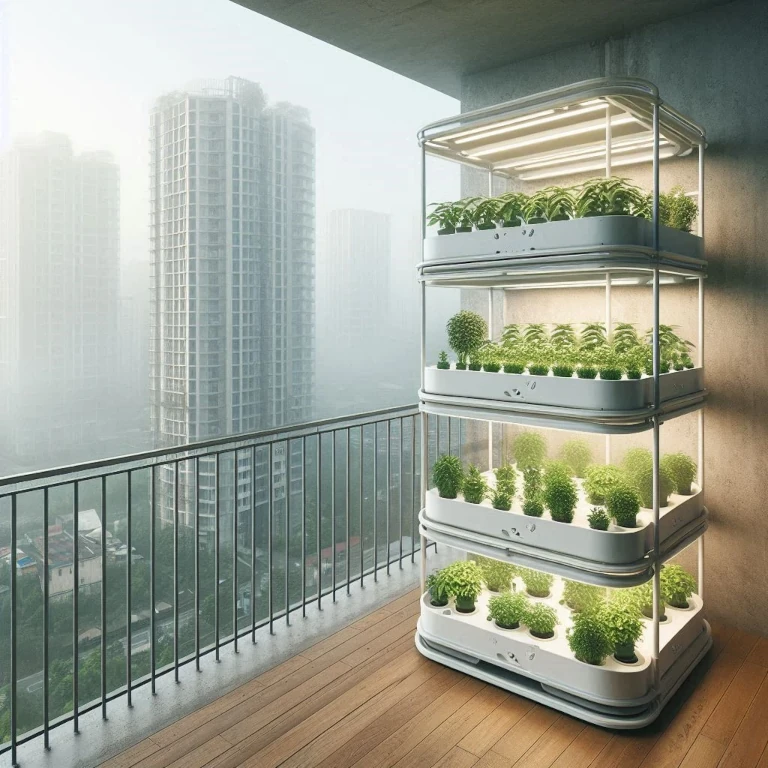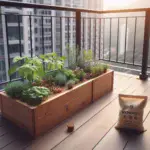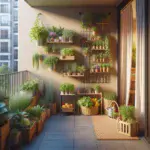🌿 Introduction: The Rise of Hydroponic Gardening in Small Spaces
Smart hydroponics is revolutionizing urban and home gardening. With more people living in cities, the need for practical, space-saving ways to grow food has skyrocketed. This is where using hydroponic gardening in small spaces really shines. It enables fresh, healthy produce to be grown right in the heart of the city—without soil or large garden plots.

One of the biggest wins of Hydroponics is water efficiency. These systems reuse nutrient-rich water and can use up to 90% less than traditional gardening methods. For urban gardeners looking to conserve resources, this is a major advantage. Home hydroponics also eliminates weeding and reduces pests, offering a clean and convenient gardening method right where you live.
🏙️ Maximizing Urban Space with Vertical Hydroponics
🌱 Why Small Spaces Aren’t a Barrier
Traditional gardening isn’t always an option in the city. However, utilizing hydroponic gardening in small spaces it’s possible to grow a surprising amount of food with minimal square footage. Even a corner of your kitchen or balcony can become a flourishing food hub.
🪴 Stackable & Flexible Setups
Vertical systems allow plants to be grown in tiers. This setup works well on balconies, rooftops, or even inside apartments. Every square foot can become a productive part of your food system. Many compact hydroponic gardening systems are modular, meaning they can scale with your needs and available space.
🔧 Understanding Smart Hydroponic Systems
💧 Water Efficiency at Its Best
Unlike soil gardening, where water evaporates or drains away from the soil, hydroponic systems use a closed-loop configuration. This recirculates water and nutrients, reducing waste and ensuring healthy, oxygenated roots.
🌡️ Climate & Nutrient Control
Technology plays a huge role. Smart hydroponics uses sensors to track pH, temperature, and nutrient levels. Automated systems adjust conditions in real time, keeping plants in their ideal zone. With indoor hydroponic gardening, this level of control means consistent growth regardless of outdoor weather.
💡 LED Lighting & Energy Efficiency
🌞 Indoor Growing Without Sunlight
LED grow lights let you garden indoors year-round. Tailored light spectrums promote photosynthesis while staying energy-efficient. These are essential tools in home hydroponic systems where natural sunlight is limited.
⚡ Smart Energy Management
These systems also support sustainability. By using low-energy components and optimizing power use, they reduce your carbon footprint while keeping costs down.
⚠️ Challenges of Hydroponic Gardening in Small Spaces
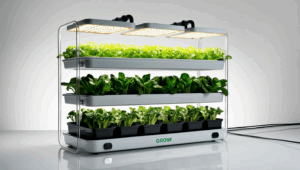
🚫 Crop Limitations
Some crops, like root vegetables, don’t adapt well to hydroponic setups. Stick with leafy greens, herbs, and small fruits for best results.
💸 Upfront Costs
While long-term savings are real, initial equipment and tech costs can be high. Budget-conscious gardeners may need to start small and scale over time. Fortunately, many starter home hydroponic systems are becoming more affordable.
🧰 Maintenance and Reliability
Automation is helpful, but dependency on tech means system failures can be risky. Regular maintenance and backup systems are important. Simple hydroponics for small spaces can offer a low-tech entry point before scaling up.
📈 Turning Hydroponics into a Profitable Venture
🥬 Focus on High-Value Crops
For those business minded growers, target the high-value crops. Leafy greens, basil, parsley, and strawberries are fast-growing and in demand. Their short grow cycles make them ideal for turning quick profits.
🤖 Smart Tools for Smart Farming
With Apps and AI platforms you can fine-tune conditions from wherever you are. Also, smart tools can predict yields and provide alerts. This means fewer losses, better quality, and improved decision-making.
🔄 Integration and Innovation
Combining traditional know-how with smart tech is the future. Successful urban farms use both to create reliable, high-yield systems that serve communities and boost incomes. Even small-scale urban hydroponic systems can supply local markets or personal kitchens with fresh food.
❓ FAQ: Hydroponic Gardening in Small Spaces
Absolutely. Many compact hydroponic systems are designed specifically for small-space environments like apartments, balconies, and countertops. Vertical and modular units maximize yield in limited areas.
A basic home hydroponic setup can start around $50–$150. More advanced smart systems with automation features may cost $300 or more but offer greater control and efficiency.
Leafy greens like lettuce, spinach, and kale are beginner-friendly. Herbs such as basil, mint, and cilantro also thrive in hydroponic systems and are perfect for small spaces.
Yes. If your setup doesn’t receive adequate natural light, LED grow lights are essential. They’re energy-efficient and promote healthy plant growth year-round.
Yes. Hydroponics uses up to 90% less water than traditional gardening, reduces waste, and works well with energy-efficient systems—making it a sustainable option for urban living.
🚀 Final Thoughts
Hydroponic gardening in small spaces offers urban growers a sustainable, efficient, and exciting way to produce food. With smart tools, compact setups, and flexible designs, home hydroponics is now within reach for almost anyone. With thoughtful planning, anyone—from beginners to pros—can enjoy fresh, homegrown produce year-round.

